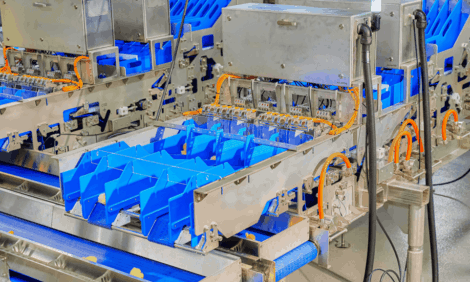



Link Between Broiler Intensification and Foodborne Pathogens Explored
Today's intensive methods of broiler production may be linked to the growing prevalence of foodborne Campylobacter in humans, according to Professor Tom Humphrey of the University of Liverpool. He presented his views on this topic at a conference in early April, reports Jackie Linden, senior editor of ThePoultrySite.Animal welfare could be a victim of the drive towards improving global food security, according to Professor Tom Humphrey of the National Centre for Zoonosis Research at the University of Liverpool. He was speaking on 'Endocrines and host-pathogen interactions' at a combined meeting of the British Society of Animal Science (BSAS) and the UK branch of the World's Poultry Science Association (WPSA) in Nottingham in April 2011.
Professor Humphrey continued by asking how much animal welfare matters when price is the driver of most poultry meat sales in the UK and elsewhere, and intensive production is the main reason why poultry meat can be sold cheaply.
"If you change anything about an animal, you also change its associated micro-organisms, like Campylobacter," he warned.
The important question, he continued, is whether an unhappy animal poses a greater threat to food safety.
According to Professor Humphrey, the changing pattern of human Campylobacter infections over the last 20 years – shifting from affecting mainly the young to older people over this period – is at least partially related to the industrialisation of chicken production.
He continued that Campylobacter poses broadly two health threats. The first is high levels of surface contamination, with levels of up to the 109 being recorded. However, Professor Humphrey is more concerned about the second, the contamination of liver and muscle cells after the bacteria leave the gut. He said that 25 per cent of muscle samples have been found to contain Campylobacter and 75 per cent of chicken livers. This may be the result of contamination during the slaughter process, especially during evisceration and scalding, he said, but it is also possible the organism is changing on the farm, becoming pathogenic.
Most Campylobacter become invasive only when the chicken's health or welfare are compromised, for example, when the bird is stressed during catching or immuno-suppressed as the result of an endemic disease such as avian pathogenic Escherichia coli (APEC). However, some strains are always invasive, and leave the gut for the liver or muscle, causing lesions, he explained.
It is Professor Humphrey's contention that Campylobacter, a common zoonotic pathogen worldwide, is becoming increasingly hard for chickens to control, and that it is the state of the host that influences both symptoms and outcome.
"Animals are victims of their environment," he said, adding that the solution the controlling Campylobacter lies in keeping the animal's gut healthy.
Roles of Stress and Other Pathogens on Campylobacter Risk
| * "The behaviour of Campylobacter in vivo is strongly linked to the health and welfare of the host" |
|
Professor Tom Humphrey
|
Sources of stress in poultry include major physiological events such as egg-laying or hatching, mixing social groups, production-related conditions (including hock burns and breast blisters, thinning and transportation) and poor diets that inflame the gut mucosa. Stress will also cause inflammation of the gut and modulate immune function in ways that may benefit Campylobacter.
Professor Humphrey suggested that the behaviour of Campylobacter in vivo is strongly linked to the health and welfare of the host.
This is based on the observation that noradrenaline has been shown to increase the growth of Campylobacter. Noradrenaline is released into the gut when an animal is stressed and it leads to changes in the gut that increase the availability of iron. It is known that Campylobacter competes poorly for iron with other gut microflora. Furthermore, Campylobacter jejuni pre-treated with noradrenaline has been shown to be more invasive in chickens.
Chronic stress leads to the spread of C. jejuni outside the caecum, as shown that Campylobacter does lead to diarrhoea in commercial birds.
The rise of both endemic APEC and Campylobacter in broilers may be explained by the characteristic of E. coli to cause inflammation of the gut mucosa, making it easier for Campylobacter to invade other organs and muscle.
In conclusion, Professor Humphrey called for further investigations into improving production systems in order to reduce stress on the birds and so keep Campylobacter out. Bird type – slow versus fast growing – and environmental conditions may play a role too, he said, adding that Denmark appears to have gained better control of Campylobacter in broiler flocks through effective biosecurity.
May 2011









